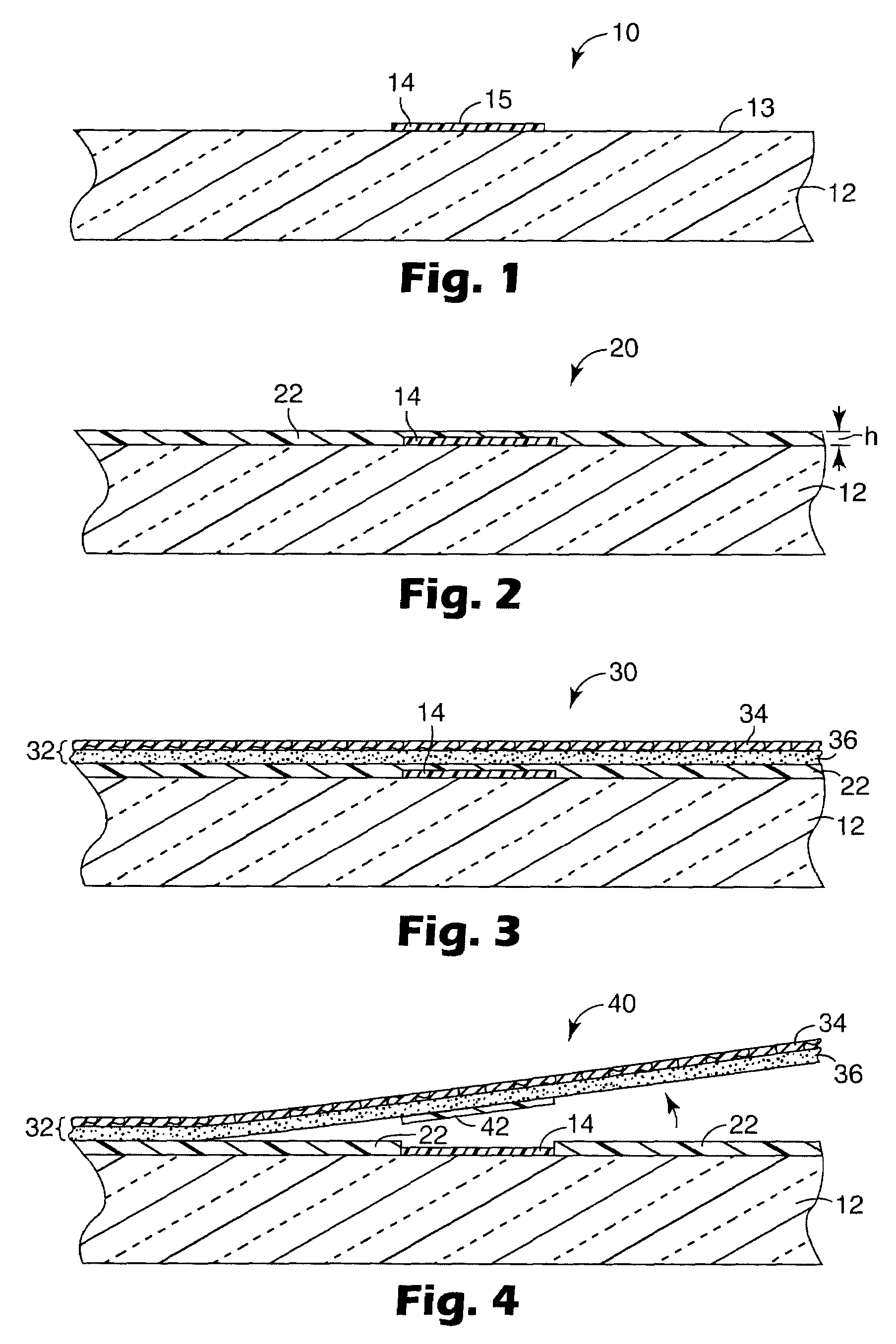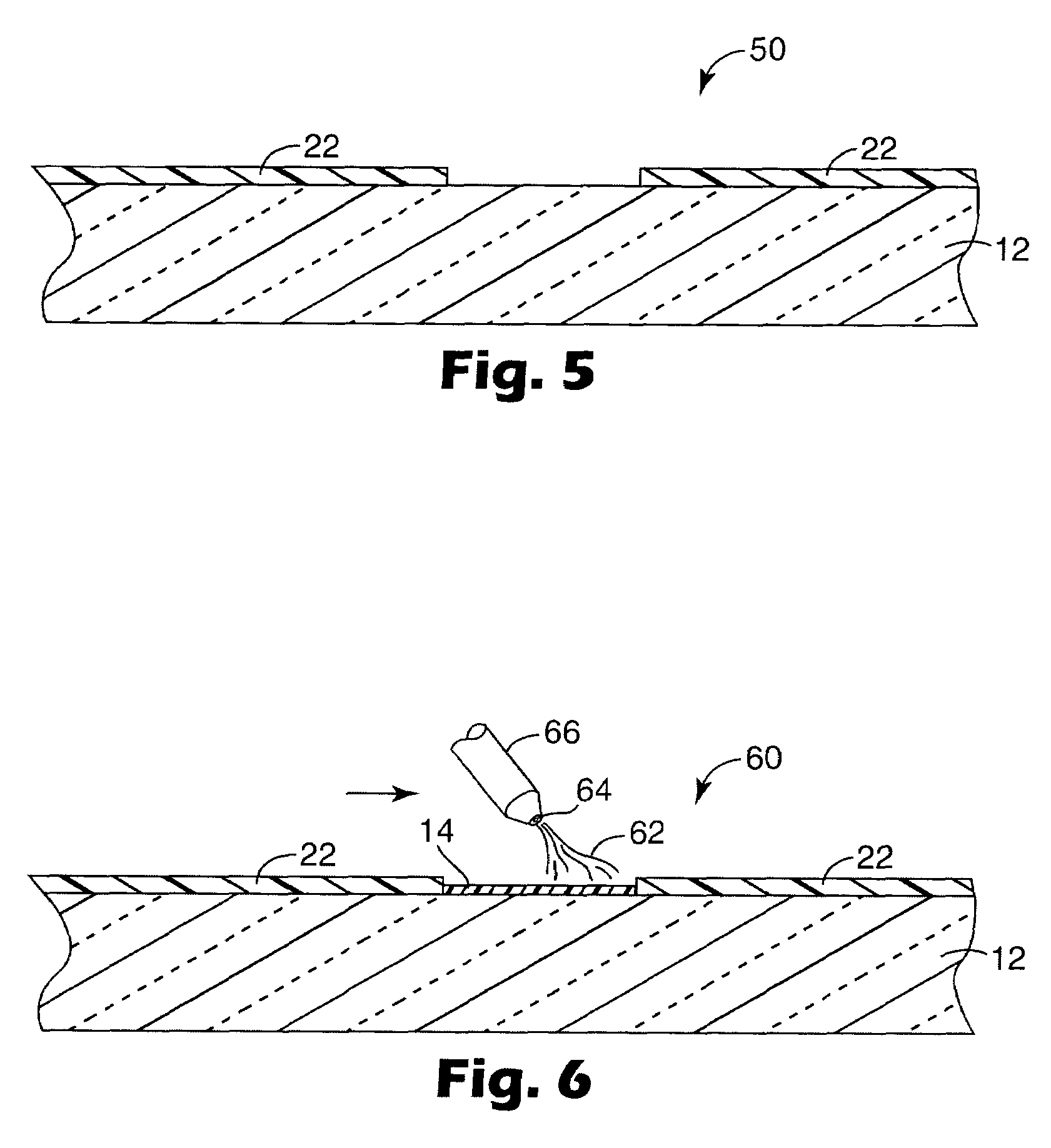Patterned coating method employing polymeric coatings
a technology of polymeric coatings and patterned coatings, applied in the direction of resistive material coatings, circuit masks, packaging, etc., can solve the problems of difficult to meet the needs of photoimaging, difficult to remove solvents, and difficult to apply and remove tapes
- Summary
- Abstract
- Description
- Claims
- Application Information
AI Technical Summary
Problems solved by technology
Method used
Image
Examples
example 1
[0044]Using a hand-held cotton swab, generally C-shaped and generally straight streaks of FLUORAD™ FC-722 fluoroaliphatic copolymer coating (formerly commercially available from Dyneon LLC Oakdale, Minn.) were formed on the surface of a 50 mm×75 glass slide. A rapid application rate was employed in order to obtain a release polymer coating thickness of about 0.1 μm as measured using a TENCOR™ profilometer (commercially available from KLA-Tencor Corporation, San Jose, Calif.). FIG. 7 shows the profilometer scan. In cross-section the release polymer coating looked like coating 14 in FIG. 1.
[0045]Using a spin-coating apparatus operated at 6000 rpm, No. PI 2579B polyimide (commercially available from HD Microsystems LLC, Parlin, N.J.) was coated over the pattern and over the remainder of the substrate to form a substrate-adherent polymer coating having a substantially constant height of about 0.3 μm with respect to the substrate. In cross-section the resulting article looked like articl...
example 2
[0047]Using the general method of Example 1, a fluoropolymer release polymer pattern was formed on a glass slide. The release polymer was overcoated with a solvent-based ink applied by dip coating to form a 0.5 μm thick substrate-adherent polymer coating. A portion of the substrate-adherent polymer was removed using tape, and the underlying release polymer was removed using HFE-7200 hydrofluoroether. FIG. 10 and FIG. 11 show profilometer scans of the patterned article before and after removal of the release polymer. As shown in FIG. 10 and FIG. 11, the substrate-adherent polymer edges were sharply defined with the major exposed portion of each sidewall being generally perpendicular to the substrate.
PUM
| Property | Measurement | Unit |
|---|---|---|
| Height | aaaaa | aaaaa |
| Height | aaaaa | aaaaa |
| Height | aaaaa | aaaaa |
Abstract
Description
Claims
Application Information
 Login to View More
Login to View More - R&D
- Intellectual Property
- Life Sciences
- Materials
- Tech Scout
- Unparalleled Data Quality
- Higher Quality Content
- 60% Fewer Hallucinations
Browse by: Latest US Patents, China's latest patents, Technical Efficacy Thesaurus, Application Domain, Technology Topic, Popular Technical Reports.
© 2025 PatSnap. All rights reserved.Legal|Privacy policy|Modern Slavery Act Transparency Statement|Sitemap|About US| Contact US: help@patsnap.com



